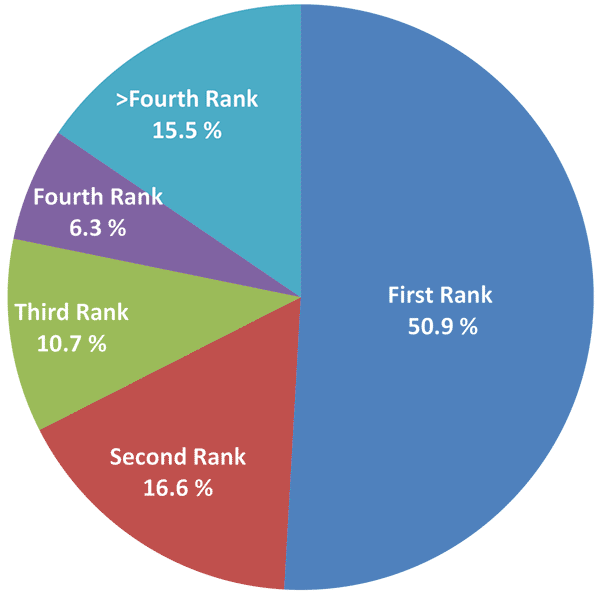The Rank List
In early January, you must submit a rank list placing programs in the order you would like to attend them. You can only include programs at which you interviewed. Residency programs also rank all of their interviewees in a similar fashion. This all gets sorted out by a computer system to make everyone as happy as possible. Theoretically, you could match at any program on your list, so do not list any program where you absolutely would not want to go. That being said, the only way you can match with the programs at the end of your list is if the algorithm did not match you with any of the programs you ranked above them. Therefore, if you end up matching at those programs you would not have matched at all if you had not ranked them. Personally, I would have rather matched at my lowest-ranked program than to not have matched anywhere at all.
The Match Algorithm
The match process happens using a specific algorithm. Understanding the algorithm is key to structuring your rank list. I will attempt to explain the algorithm using an example scenario:
John is an ophthalmology applicant and has ranked Program A #1, Program B #2, and Program C #3. Let's say John is the very first person the match algorithm considers when it begins processing its data. Because he ranked Program A #1, he will be placed in the #1 spot on their match list as long as that program ranked him anywhere in their list. Jane also ranked Program A #1. Unfortunately for John, Program A ranked Jane higher than him, so he is moved to their #2 match spot and Jane replaces him at #1. Several more applicants rank Program A #1 and they were all ranked higher than John by the residency program. The program only has 4 residency positions, so John is moved off the program's match list. The algorithm now goes back to John and sees he ranked Program B #2. It tries to put him on their match list, but they have already been filled by applicants who were ranked higher than John. Finally, the algorithm assesses Program C, which John ranked #3. Program C ranked John #1 on their match list, so it is impossible that he will be bumped off the list by anybody else. After the algorithm is complete, John matches at Program C.
This all means that you are not penalized for ranking dream programs above more realistic programs. If you do not match at your #1 rank, the algorithm simply moves down to your #2 as if that program was your #1. This is how the program favors applicants over residency programs.
Detailed match statistics are not provided by the SF Match, but results may be generalized from the NRMP which uses the same algorithm. According to the 2017 NRMP data, 50.9% of matched U.S. seniors ended up at their first choice while 78.2% matched in one of their top 3 choices (Figure 4) (9).

Figure 4. Overall percentage of U.S. senior matches by applicant choice in the 2017 National Resident Matching Program (NRMP) residency match (9).


